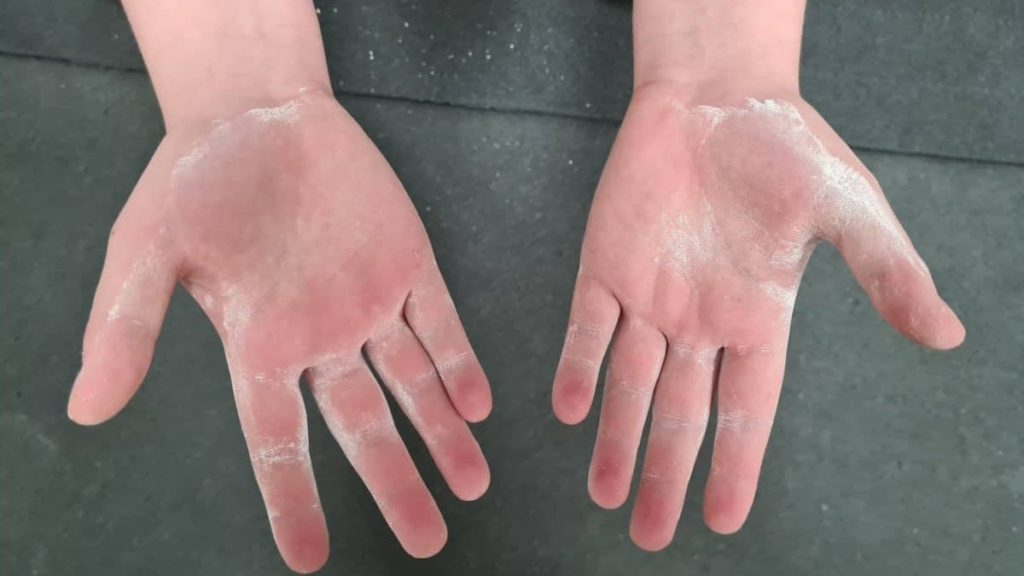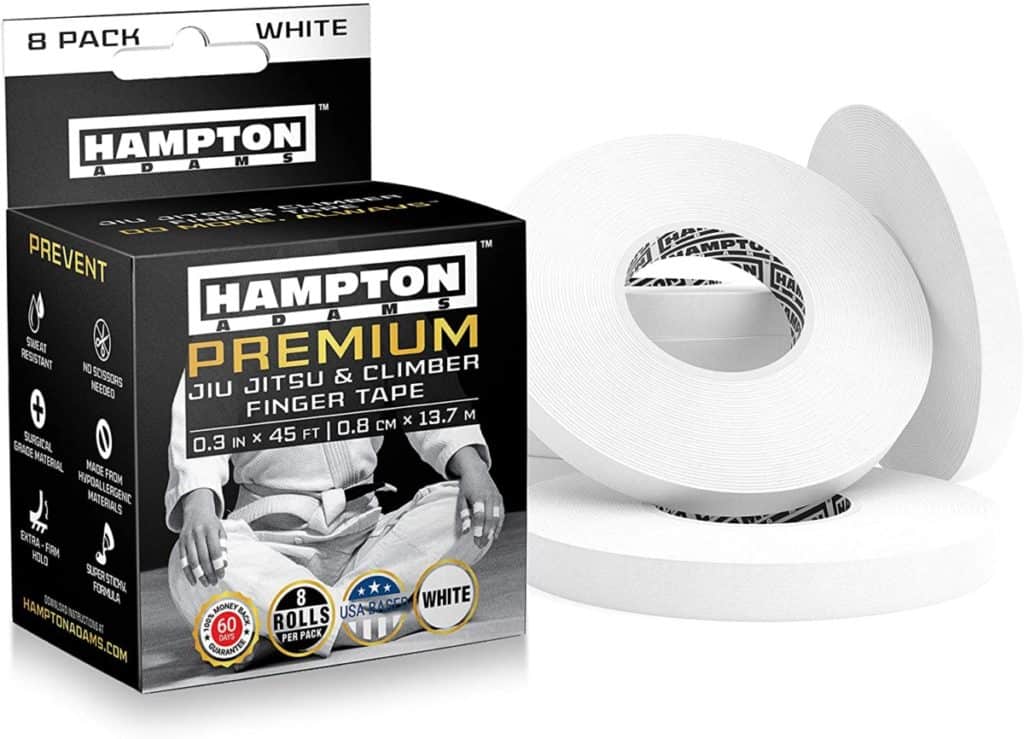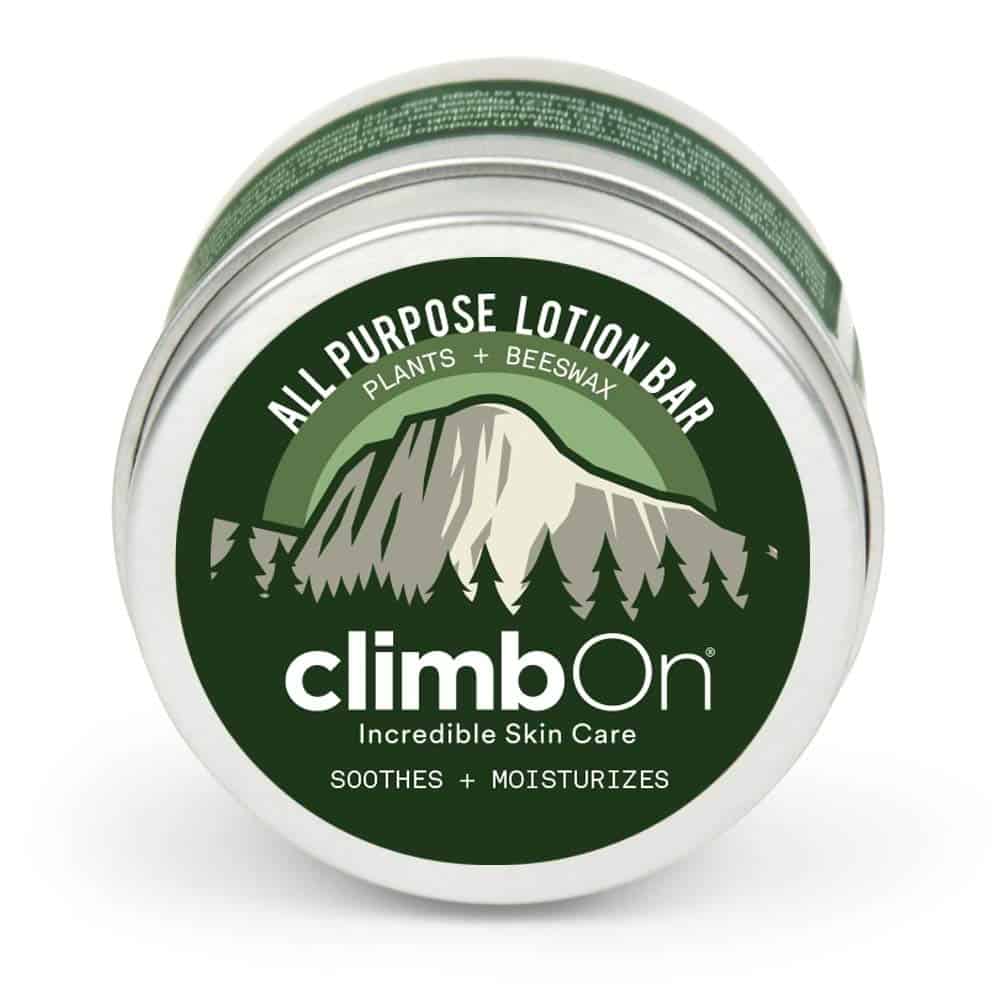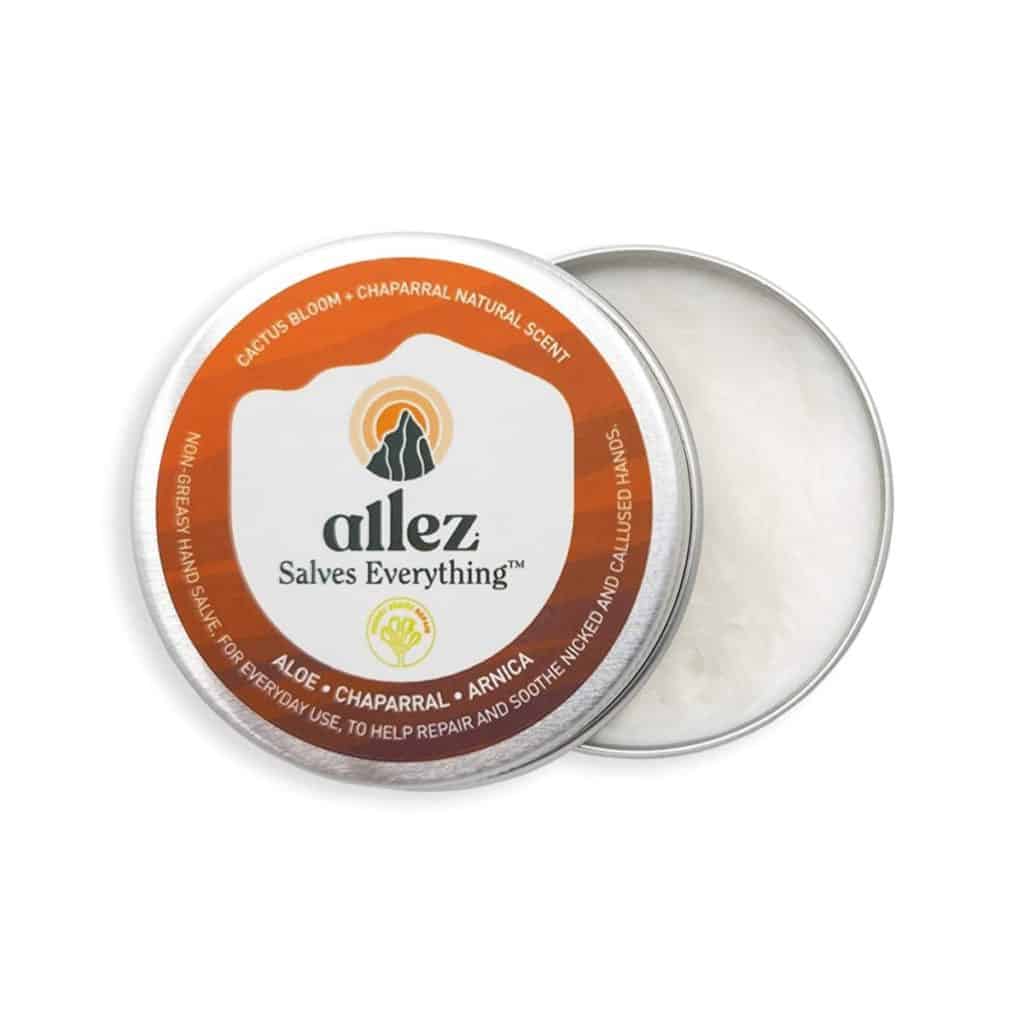
When I was a beginner in climbing a couple years ago, I faced all of these problems. Sometimes there was a little blister on my palm and other times the skin on my fingers ripped off and I had a flapper. I learned much about what is effective to treat these skin injuries after climbing and what to do immediately when they occur.
Altough it might be usefull to show picturs of actual blisters, flappers and calluses here I wont do that, because some people find it very disgusting to see them and i respect that. However, if you are unsure which kind of skin injury you have from climbing read the subheading below.
What are Blisters, Flappers And Calluses in Climbing?
- Blisters are bubble like elevations on the first skin layer that are filled with a liquid. Usually they are filled with blood, serum or plasma. Most of the times they are pretty small are caused by the friction between your hands and the climbing holds.
- Flappers are loose patches of skin that “flap around” and are still connected to your body (in climbing most of the the times on the hands and sometimes the feet). They leave behind a very vulnerable piece of skin that lays underneath the flapper.
- Calluses are harder and thicker areas of the skin (on the hands) that are way less sensitive than others. They are building because of the friction between the skin and the rough surface of the climbing holds. Usually calluses are building right under the joints of your fingers, where the most pressure is applied from climbing.
How to Treat Blisters While Climbing
When you see a blister building while you are climbing you should stop your training immedtiately and don’t attempt any more climbing routes. The blister on your hand makes it very painful to climb and it is definitely not worth it to keep climbing.
Because the blister is a very sensitive spot on your hand, the pressure that is applied on it when grabbing a hold, is way too much and will cause the pain. The pressure on the blisterfrom additional climbing also prevents you body from healing it, because it interrupts the recovery or atleast slows it down.
If you encounter a blister when you just started the climbing ession, try to do something else with your energy. Train the other fingers on the hangboard or try some very technical routes that don’t require a lot of finger strength. Whatever you do, just don’t ignore the blister and let it heal.
Should You Pop Climbing Blisters?
Poping blisters from climbing with a needle is a pretty common way to shortcut the recovery time needed to be able to climb again. However according to medical experts blisters are built from the body to protect the skin, so poping the blisters isn’t recommended, because it prevents the skin from fully healing.
However some people find success with poping the blisters. So if you want to that aswell, altough it isn’t recommend, there are still a few things you should be careful about. Before poping the blister you should disinfect it and the needle with alcohol to pevent wound infections.
Try to drain enough liquid into tissues, so that the blister is flat enough to tape it. After you removed the liquid, rub with alcohol once more and wrap tape around the finger. If you have the blister on a place where you can’t put tape around it, like the palm of your hands, try to use a plaster instead to seal the wound.
To buy good quality climbing tape check out the one below. It is always handy to have tape, so when an injury occours, your are prepared. Tape is also very effective for flappers and other skin injuries on your hands besides blisters, that are caused by climbing.
If you wait the time your body needs to heal the blister or pop it, in both cases the wound should most of the times be fully healed after a few days. In some rare cases it can take up to a weak until you can climb again. If the blister still isn’t healed after that amount of time you should probably see a doctor.
How to Treat Blisters After Climbing
As already mentioned you can either pop the blisters after climbing, which isn’t recommend, or let your body the time to heal them naturally. You can support that healing process and make it faster with moisturizing your hands with a salve or lotion.
However it is also recommended to moisturize your hands after climbing, even if you didn’t injure them, because the chalk makes them very dry. So if you are looking for a lotion for climbers check out the left one below. If you are looking for a salve to support the healing process check out the right one.
How to Prevent Blisters in Climbing
Blisters are the result of the friction between your hands and the rough surfaces of the all the holds you grab while climbing. As a beginner you can’t really avoid blisters or some other sorts of skin injuries in climbing, because your skin is probably still very soft and totally not used to the pressure and friction climbing applies on it.
However there are some thngs you can do to make blisters and other skin injuries happen less likely. Try to avoid new holds, that are not often used yet, because the surface of them is very rough and harmful to your skin. As your skin gets thicker it is no problem to also climb new routes, but in the beginning try to avoid them.
Also try to avoid small holds (crimps) and holds that apply very much pressure on your fingers as a beginner. Instead attempt routes with big holds where you can fit in your whole hand (jugs) or atleast all your fingers. However most of the times this comes naturally, as easier routes only have better holds that are less harmful to the skin.
How to Treat Flappers While Climbing
The best solution for flappers while climbing is tape. With tape you can either tape the loose patch of skin back onto the hand or you can cut the skin off and tape the wound, so the very vulnerable second skin layer doesn’t get hurt when you continue climbing.
Whichever solution you choose, the most important thing is that the wound is protected and can recover. With tape it is possible to keep climbing even when you have a flapper. The tape is like a new skin layer on top of the flapper area, which makes it safe to climb.
Alternatively, if you don’t have climbing tape, you can just stop climbing for the moment and let the skin underneath the flapper heal back to normal in a couple of days. Climbing without taping the flapper is a bad idea and will probably cause the flapper to get bigger or even create a new flapper next to the already existing one.
Climbing without taping the flapper also hurts very much, because the vulnerable area gets in direct contact with the rough surface of the holds. So either tape the flapper or stop climbing and wait a couple of days until your body recovered and the first skin layer is built back up.
How to Treat Flappers After Climbing
The most important thing after climbing is to disinfect the wound and keep the area underneath the flapper clean, so no bacterias can get into it. If you don’t do that the wound can get infacted very fast, because of all the surfaces you touched during and after your climbing session.
As already mentioned you can either put the loose piece of skin back on the hand or cut it off. I recommmend cutting the loose skin patch off, because then a new layer of skin can be built from your body and the healing process generally goes faster.
After disinfecting the wound you should put something around it that protects ot from bacteria and contact to surfaces in your daily life, so it can heal. This can be climbing tape a plaster or anything that puts a layer between the wound and enything else you touch. For a tutorial on taping your fingers click on the video below.
If you plan on climbing with the flapper wound not fully healed already, plan on climbing easier routes that don’t apply as much pressure on the hand and fingers. Alternatively you can just wait until the flapper is fully healed and then start climbing normally again.
How to Prevent Flappers in Climbing
Flappers mostly occour as a beginner when you do routes where you slip off or the holds are hard to grab, so you have to apply a lot of pressure. Try to avoid these kinds of routes as a beginner, because the skin on your hands is most likely still very soft and vulnerable to injuries from climbing.
Otherwise you can’t really prevent flappers or other skin injuries from happening as a beginner. Almost everybody I know had them to some degree when they started climbing. So just try to treat them correctly and with time your skin gets used to climbing and injuries will appear less often.
However sometimes even pro climbers have flappers, altough their skin is very thick and strong from all the climbing they did. But in their case the cause is way too excessive climbing. When you climb 6 hours a day injuries will eventually come, even when your skin is used to it.
How to Treat Calluses in Climbing
Calluses are just thicker areas of your skin that come naturally when you climb for a longer period of time, so you don’t have to treat them. Calluses are actually pretty helpful, because the harder area on your hands prevents them from getting injuried.
However uneven calluses areas can be pretty dangerous, because they can become flappers or other skin injuries when there is too much pressure on them. Because of this it is recommended to file off excess skin with a hand and finger file. If you are looking file specfically made for climbers check out the one below.
If you don’t want calluses on your hands at all, or reduce them you can file them down as much as you want. Just be careful, that you don’t file too much away, because having a little layer of thicker skin is very benefitial for climbing, as it prevents injuries. Additionally you can also use lotions to moisturize your hands after every climbing session, so your hands stay soft and don’t get too hard.
How to Prevent Calluses in Climbing
Because your body is naturally building calluses, as a reaction to the high pressure your skin is exposed to when climbing, you can’t really prevent it. Your skin will get thicker when you are climbing often and this is good, because it makes it easier and prevents finger pain.
However if you want to slow down the precoess you can use a lot of chalk when climbing and always chalk up before every attempt, to reduce the exposure of your skin to the rough surface area of the holds. Like this your skin is less attacked from climbing and calluses will be build slower.
Final Thoughts
The hands are the tools of the climber, so try to keep your tools in tact and clean. In other words be careful with your hands and don’t overdo it. Take a break when needed and listen to your body. All the products mentioned above are very helpful to keep your hands injury-free, but are by no means necessary to be a good climber.
They just support your skin in injury prevention and recovery. In my opinion they are totally worth the price, because heatlth is the mot important thing in every sport. If you are not healthy you can’t do the sport. So care about yourself and rather be overly cautious than too little.





